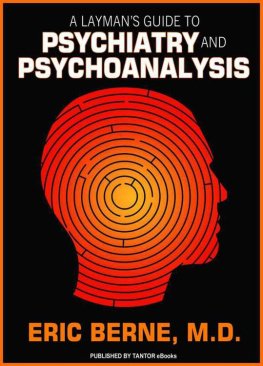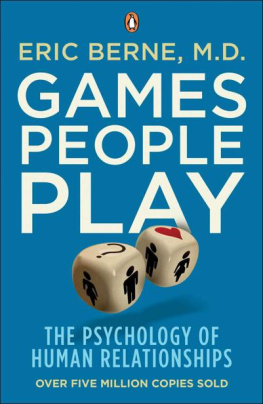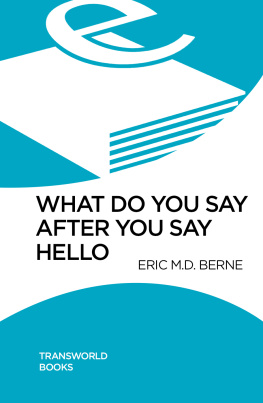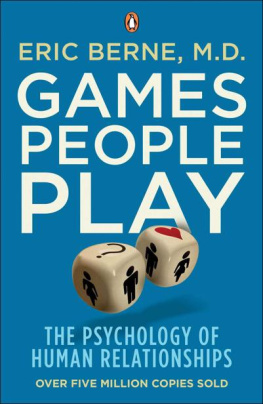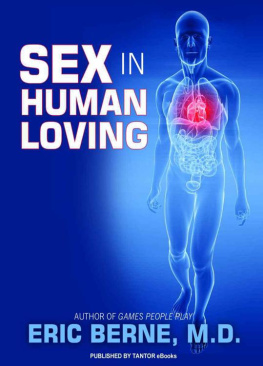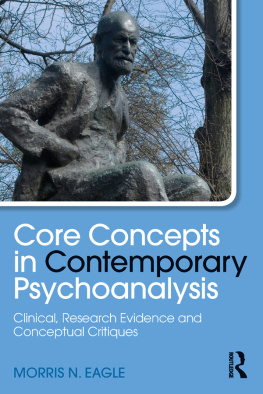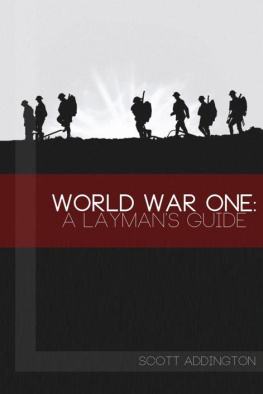Berne - A Laymans Guide to Psychiatry and Psychoanalysis
Here you can read online Berne - A Laymans Guide to Psychiatry and Psychoanalysis full text of the book (entire story) in english for free. Download pdf and epub, get meaning, cover and reviews about this ebook. year: 2011, publisher: Tantor eBooks, genre: Romance novel. Description of the work, (preface) as well as reviews are available. Best literature library LitArk.com created for fans of good reading and offers a wide selection of genres:
Romance novel
Science fiction
Adventure
Detective
Science
History
Home and family
Prose
Art
Politics
Computer
Non-fiction
Religion
Business
Children
Humor
Choose a favorite category and find really read worthwhile books. Enjoy immersion in the world of imagination, feel the emotions of the characters or learn something new for yourself, make an fascinating discovery.
- Book:A Laymans Guide to Psychiatry and Psychoanalysis
- Author:
- Publisher:Tantor eBooks
- Genre:
- Year:2011
- Rating:3 / 5
- Favourites:Add to favourites
- Your mark:
- 60
- 1
- 2
- 3
- 4
- 5
A Laymans Guide to Psychiatry and Psychoanalysis: summary, description and annotation
We offer to read an annotation, description, summary or preface (depends on what the author of the book "A Laymans Guide to Psychiatry and Psychoanalysis" wrote himself). If you haven't found the necessary information about the book — write in the comments, we will try to find it.
Eric Berne is best known as the author of the 1965 classic Games People Play. A Laymans Guide to Psychiatry and Psychoanalysis, first published in 1947, is his introduction to the psychoanalytic school of thought, written in accessible language that anyone can understand and enjoy.
Berne: author's other books
Who wrote A Laymans Guide to Psychiatry and Psychoanalysis? Find out the surname, the name of the author of the book and a list of all author's works by series.
A Laymans Guide to Psychiatry and Psychoanalysis — read online for free the complete book (whole text) full work
Below is the text of the book, divided by pages. System saving the place of the last page read, allows you to conveniently read the book "A Laymans Guide to Psychiatry and Psychoanalysis" online for free, without having to search again every time where you left off. Put a bookmark, and you can go to the page where you finished reading at any time.
Font size:
Interval:
Bookmark:
to
PSYCHIATRY
and
PSYCHOANALYSIS
Copyright 1975 by Dr. Eric Berne.
This electronic format is published by Tantor eBooks, a division of Tantor Media, Incorporated,
and was produced in the year 2011.
In my efforts to explain the authors mode of operation it occurred to me that psychoanalytically Dr. Berne is just about 40 years younger than the present writer. In other words he belongs to the post bellum period of psychoanalytic recognition, and hence can evaluate Freuds contribution as part and parcel of the whole progressive development of psychiatry. In other words Dr. Berne is a young Freudian who like the new generation of Egyptians did not know Joseph and hence could follow a new path and expound the new psychology without the affectivity of the older Freudians. The psychoanalytic theories were well established when Dr. Berne mastered them; that is why he could complacently survey the whole field of psychoanalysis, the fons et origo as well as all the deviations from it, and then easily separate the kernel from the sheaf. Having read everything written on Freud and psychoanalysis since I first introduced him here, I feel that Dr. Berne has succeeded in presenting the mind in action in a manner that will interest and instruct not only the intelligent layman but also the psychoanalyst and physician.
Radical changes in the practice of out-patient, hospital and community psychiatry have resulted from the rapid advances in drug therapy and group therapy during the last ten years. In addition, transactional analysis and other new approaches to psychotherapy have gradually been taking over in areas where psychoanalysis has not proven satisfactory. In fairness to the public, therefore, since interest in the book promises to be sustained, the present extensive revision was undertaken.
After careful deliberation, I decided to retain the section on physical types, as an indication that the body is here to staysomething which is too often overlooked by nonmedical therapists, particularly those trained in the social sciences. Part I and most of Part II treat the human being as an energy system, and for this point of view Freudian theory is the best approach. I have followed the strict version of Freud, which separates the sex instinct from the death instinct, and have given equal weight to Eros and Thanatos. That makes everything much easier to explain, and certainly fits in better with the historical events of the last thirty years, which are not easy to understand from libido theory alone, but become much clearer by introducing Paul Federns concept of mortido.
I have included contributions from several of my colleagues. Dr. Claude Steiner, who specializes in the treatment of alcoholism, drug addiction, and other forms of what he calls tragic behavior, has contributed to the rewriting of Chapter Seven, which deals with those topics. Dr. John Dusay has written a chapter on transactional analysis, and Mrs. Hilma Dickson, Mrs. Mary Edwards, Dr. Muriel James, and Dr. Ray Poindexter, have each contributed a section on their respective specialties. They know more about their fields than I do, and Dr. Dusay has treated transactional analysis much more objectively than I could, and I am grateful to all of them.
E. B.
Carmel, California
September 1967
Rereading the book after a decade, I found it rather appealing, and at times had the well-known Wilde reaction: I wish Id said that! It was agreeable, after a moments reflection, to remember that I had. My only regret was that the war seemed, in minor instances, to have distracted me from broader scientific points of view. I am glad now to have an opportunity to reconsider.
As to the changes in the present edition, the section on Man As a Political Animal has been deleted, and this topic will be treated in a separate volume.* In its place, a section on the new wonder drugs of psychiatry has been inserted. The section on group therapy has been rewritten, and the section on shock treatment has been brought up to date. The Footnotes for Philosophers have been revised and the bibliographies have been brought up to date where this seemed advisable. In some instances, however, the old books still seem better than the new. And here and there a paragraph has been altered to accord with new approaches. It is hoped that any nonspecialist who desires information about contemporary psychiatry or psychoanalysis will in most cases find it here; the footnotes are designed to give reputable sources from which further details can be obtained.
Carmel, California
March 1957
Font size:
Interval:
Bookmark:
Similar books «A Laymans Guide to Psychiatry and Psychoanalysis»
Look at similar books to A Laymans Guide to Psychiatry and Psychoanalysis. We have selected literature similar in name and meaning in the hope of providing readers with more options to find new, interesting, not yet read works.
Discussion, reviews of the book A Laymans Guide to Psychiatry and Psychoanalysis and just readers' own opinions. Leave your comments, write what you think about the work, its meaning or the main characters. Specify what exactly you liked and what you didn't like, and why you think so.

